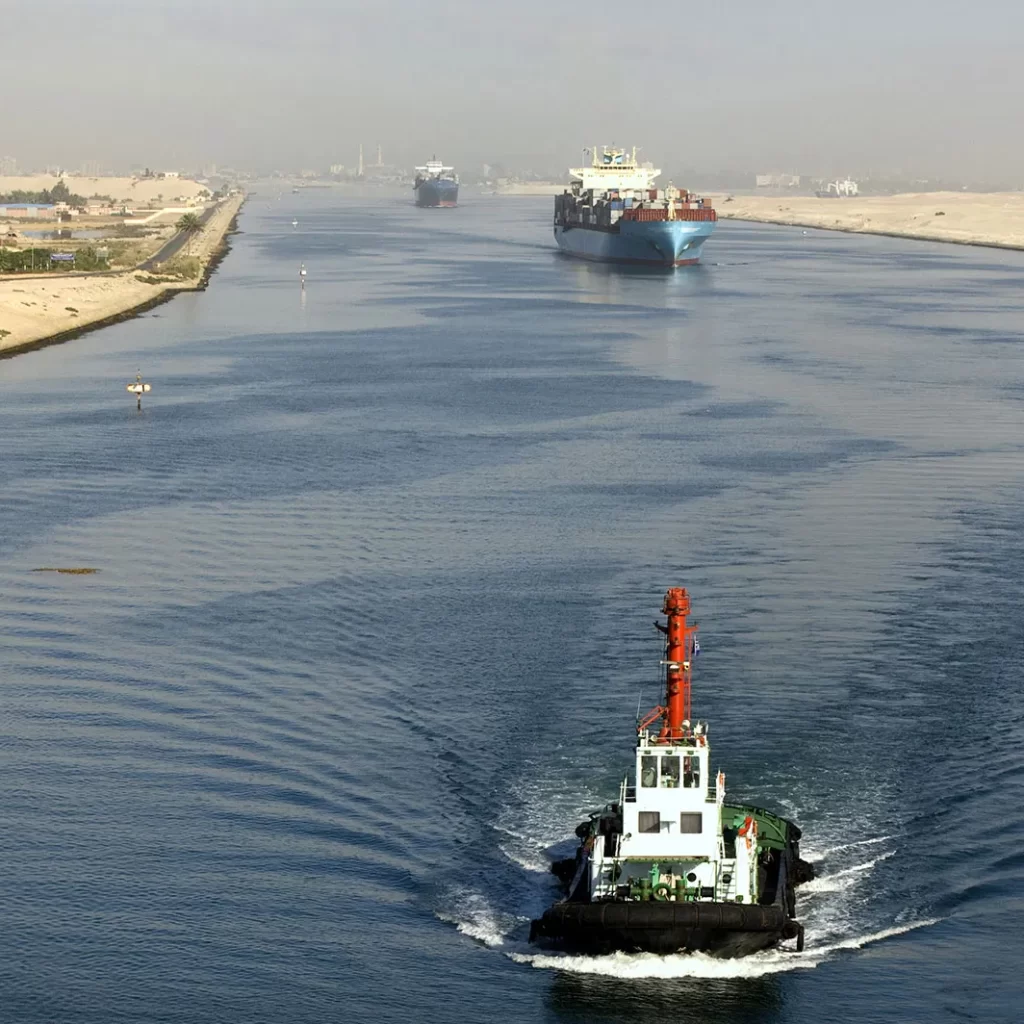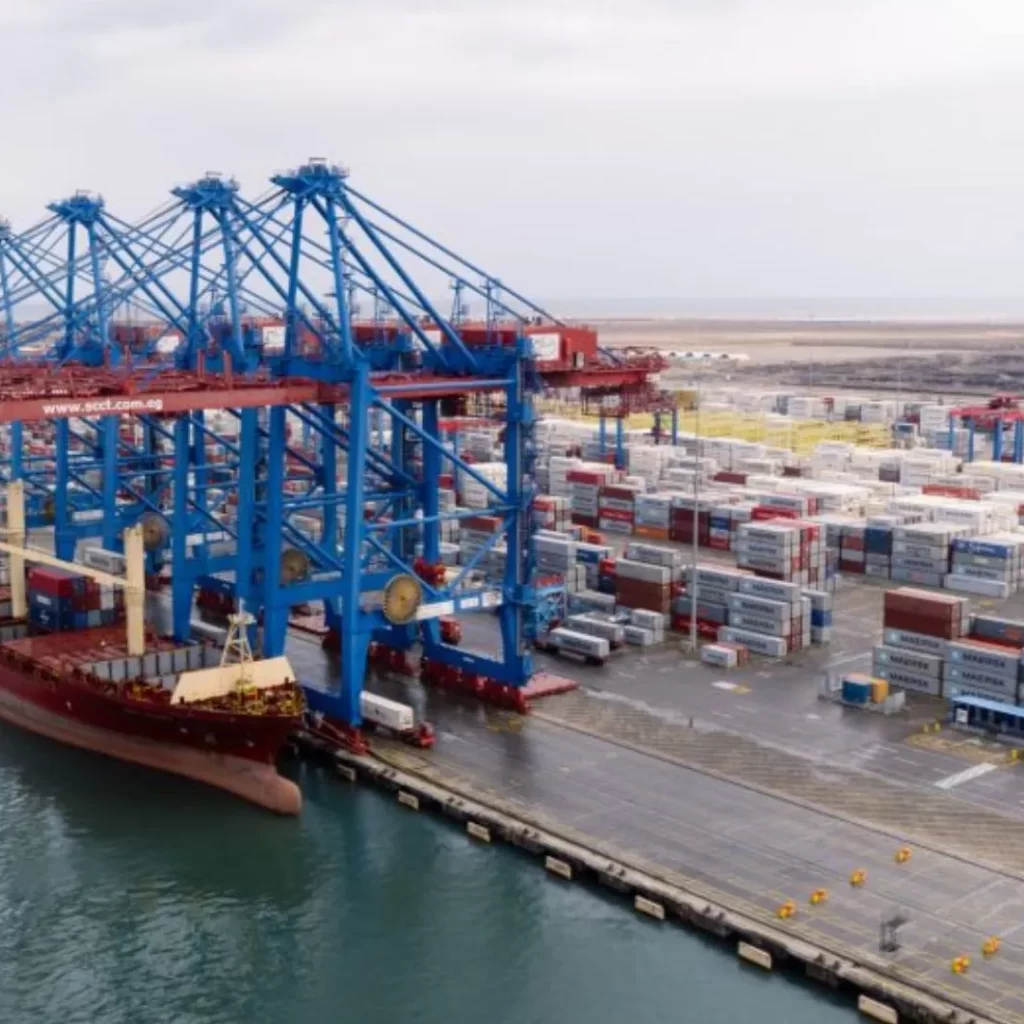Situated along the northern entrance of the Suez Canal, Said Port unfolds a maritime saga that stretches across millennia. This journey through time invites us to explore Said Port’s ancient roots, traverse its medieval marvels, understand its role during the Ottoman era, and witness its transformation in the modern age with the advent of the Suez Canal. As we navigate this historical odyssey, Said Port emerges not merely as a harbor but as a living testament to Egypt’s enduring maritime legacy.
Gateway to Pharaonic Treasures
In the shadow of Egypt’s ancient wonders. Said Port stood as a silent witness to the grandeur of the Pharaonic era. Centuries ago, when the mighty Nile flowed through a land ruled by Pharaohs. Said Port was a vital gateway for Egypt’s treasures to embark on journeys across the seas. Imagine the scene – the port bustling with activity. Ships laden with spices, silks, and the riches of the Nile’s fertile lands. It was a hub where diverse goods converged. Connecting the land of the pyramids to the wider world.
Through the rise and fall of empires, Said Port remained a constant on Egypt’s maritime map. The echoes of ancient sailors, their tales of voyages, and the exchange of goods reverberated through the port’s very foundations. This harbor was not just a point of departure; it was a cultural crossroads where civilizations met, leaving an indelible mark on the landscape. Said Port’s ancient roots, intertwined with Egypt’s rich history, became the foundation upon which its maritime legacy would flourish.
A Bustling Marketplace
As time marched forward, Said Port evolved into a bustling marketplace during the medieval era. The port became a vibrant node in the vast web of trade routes that crisscrossed the region. Merchants from different corners of the world converged on its shores, bringing with them a tapestry of goods, ideas, and cultures. The air was thick with the languages of diverse lands, and the scene was a lively mosaic of commerce.
During the medieval period, Said Port’s significance reached new heights, especially during the Ottoman Empire’s rule. It wasn’t merely a harbor; it was a lifeline for commerce between the East and the West. The goods exchanged at Said Port weren’t just commodities; they were carriers of history, stories, and the richness of cultural exchange. The port became a testament to the interconnectedness of civilizations, where the ebb and flow of trade brought prosperity and cultural diversity to its shores.
Ottoman Era
Transitioning through the pages of history, Said Port assumed a pivotal role during the Ottoman era. This period marked not only the continuation of vibrant trade. But also a time when the port became a linchpin for commerce between the East and the West. As the Ottoman Empire extended its reach. Said Port stood as a crucial hub, connecting markets from Constantinople to Cairo. And from the shores of the Mediterranean to the heart of Africa.
The bustling markets of Said Port became a reflection of the flourishing Ottoman Empire’s economic might. Goods from distant lands found their way to its docks, creating a dynamic marketplace where merchants haggled, traders negotiated, and the pulse of commerce echoed through the narrow alleys. The port wasn’t just a place of transaction; it was a melting pot where the tapestry of East and West was woven together. Spices from the East mingled with textiles from the West, creating a vibrant tableau of cultural exchange.
Modern Era and the Suez Canal

The 19th century ushered in a transformative chapter for Said Port with the construction of the Suez Canal. Completed in 1869, the canal opened new horizons, reshaping the maritime landscape of the region. Said Port, standing proudly at the canal’s entrance, found itself at the heart of this revolutionary change. No longer just a harbor for local and regional trade, Said Port became a gateway for global commerce.
The Suez Canal’s completion facilitated seamless navigation between the Mediterranean and the Red Sea. Ships that once circumvented the African continent could now take a shortcut, dramatically reducing travel time and costs. Said Port, strategically positioned at the northern entrance, played a crucial role in this maritime highway. Its docks witnessed a surge in maritime traffic as vessels from various corners of the globe docked, laden with goods destined for markets beyond borders.
Today’s Global Hub
In the 21st century, Said Port stands as a modern marvel, seamlessly blending its historical legacy with the demands of contemporary trade. Its strategic location, at the crossroads of maritime routes, facilitates the efficient transit of diverse cargo. Container ships, oil tankers, and vessels from every corner of the globe dock at its shores, creating a bustling tableau of global connectivity. Said Port’s evolution incorporates technological advancements, ensuring it remains at the forefront of the evolving maritime landscape.
The port’s economic impact extends beyond its maritime functions, contributing significantly to the economic stability of the surrounding region. The intricate dance of trade and commerce continues on its docks. Said Port has become not just a harbor but a dynamic economic engine. In navigating the challenges of the 21st century. The port has embraced digitalization, automation, and sustainable practices, ensuring it remains a resilient player in the global trade arena.
The Future of Said Port

Said Port isn’t merely sailing into the future; it’s charting a course with technological advancements. Cargo-handling processes are getting a modern makeover, and eco-friendly initiatives are becoming part of the port’s DNA. The commitment to environmental stewardship is not just a nod to global trends; it’s a promise to ensure that Said Port remains not just a gateway for goods but a responsible steward of the environment.
Adaptability is Said Port’s compass in a world marked by constant change. As trade dynamics evolve, geopolitical shifts occur, and technology continues to reshape industries, Said Port remains a steadfast gateway. It connects nations, facilitates the exchange of goods, and, in doing so, propels economies forward. Said Port isn’t just a relic of the past or a snapshot of the present; it’s a living, breathing narrative that continues to be written in the maritime story of Egypt and the world.
Said Port’s journey is like a voyage through time, where ancient roots meet modern aspirations. It stands as a testament to adaptability, resilience, and progress. From the whispers of trade in Pharaonic times to the bustling hub of global commerce today, Said Port is more than a harbor – it’s a living legacy, sailing through history and navigating the seas of tomorrow.
So, as we wrap up, our journey through Al-Montazah Palace, the National Museum of Egyptian Civilization, Luxor Temple, Karnak Temple, and the stories of Alexandria Port and Safaga Port shows us a lot about Egypt. Each place, like the fancy palace and the old temples, tells a part of Egypt’s big story. Looking at these places, we can see how Egypt’s past and present are connected. The story of Alexandria Port, especially, teaches us about how important it was in the past for trade and sharing cultures. All these stories together paint a picture of Egypt’s history and make us curious to explore more about this amazing country.




Comment (0)